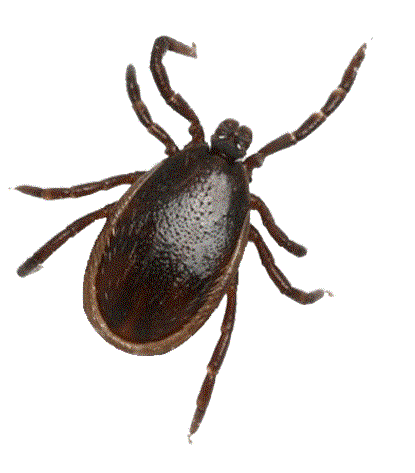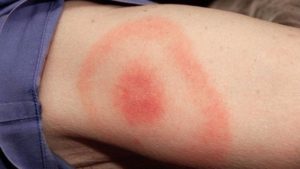
What is Lyme Disease?
Lyme disease is an infection that is caused by a bacterium that is carried by the black-legged tick.
Prevalence
In 2016, Virginia health officials reported 976 confirmed cases and 374 probable cases of Lyme disease. The CDC warns that these numbers don’t reflect every diagnosed case. In fact, it estimates that around 300,000 people in the U.S. are diagnosed with Lyme disease every year. If vacation plans are in effect, consider the area that you will be traveling. In the United States, most infections occur in the following areas:
- Eastern States: particularly New England and the Mid-Atlantic
- Northern midwestern states: particularly Wisconsin, Minnesota, and the Great Lakes
West Coast: particularly California, but also Oregon and Washington.
How is it Transmitted?
 The bacteria is spread to humans through the bite of the tick. Ticks can be attached anywhere on the body but often times attached to areas that are harder to see such as the groin, the armpit, and even the scalp. Ticks need to be attached for 36 to 48 hours before they can transmit the Lyme disease bacteria. Most people are infected through the bite of immature ticks, which are called Nymphs, but can also be infected by the adult tick. These ticks are very tiny (less than 2mm), making them harder to see than the adult tick. They are usually present during the spring and summer months, while the adults are usually present during the fall.
The bacteria is spread to humans through the bite of the tick. Ticks can be attached anywhere on the body but often times attached to areas that are harder to see such as the groin, the armpit, and even the scalp. Ticks need to be attached for 36 to 48 hours before they can transmit the Lyme disease bacteria. Most people are infected through the bite of immature ticks, which are called Nymphs, but can also be infected by the adult tick. These ticks are very tiny (less than 2mm), making them harder to see than the adult tick. They are usually present during the spring and summer months, while the adults are usually present during the fall.
Symptoms
With Lyme disease, symptoms often present as “flu-like” and include tiredness, chills, fever, headache, muscle and joint pain, and swollen lymph nodes. A reddish, round skin rash (usually resembling a bulls-eye) may appear within 3-14 days after the bite of an infected tick. Not everyone experiences this rash, especially in the early stages of the disease, however flu-like symptoms will persist.

Treatment
Lyme disease is usually treated with courses of antibiotics, such as doxycycline, amoxicillin, or cefuroxime.
Tick Removal

Grasp the tick firmly with tweezers as close to the skin as possible. Pull the ticks body away from the skin without twisting or jerking the tick, in order to prevent the mouth parts from breaking off into the skin. If this does occur, remove the mouth with the tweezers. If you are not able to remove the mouth, leave it alone and let the skin heal. After removing the tick, clean the bite area and your hands with either rubbing alcohol or soap and water. If you are unsure if the tick is infected with the Lyme disease bacteria, there are tick removal kits, that allow you to mail the tick that was removed to be tested.
Other Prevention Strategies:
- Use Environmental Protection Agency (EPA)-registered insect repellent containing, DEET, picaridin, IR353, oil of lemon eucalyptus, para-methane-diol, or 2-undecanone
- Wear clothing with long sleeves/pants and/or treated with 0.5% permethrin
- Shower as soon as possible after spending time outdoors
- Tumble clothes in a dryer on high heat for 10 minutes to kill ticks on dry clothing after you come indoors
- Check for ticks daily.
For more information about Lyme disease, visit the CDC website: https://www.cdc.gov/lyme/toolkit/index.html
Check out Bremo Pharmacy’s vaccination page for all other travel needs! https://bremorx.com/services/prescriptions-pharmacy/vaccinations/
Christian Hambrick, Pharm D. candidate 2020


